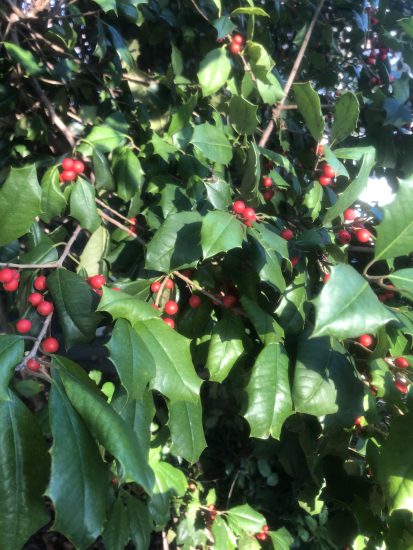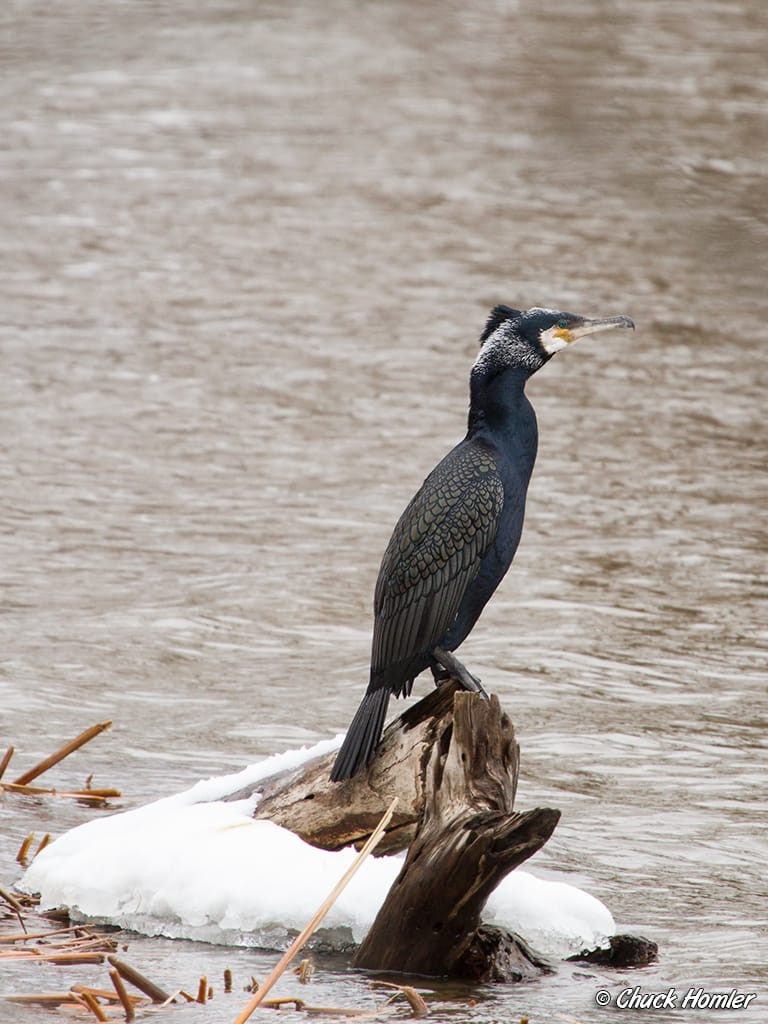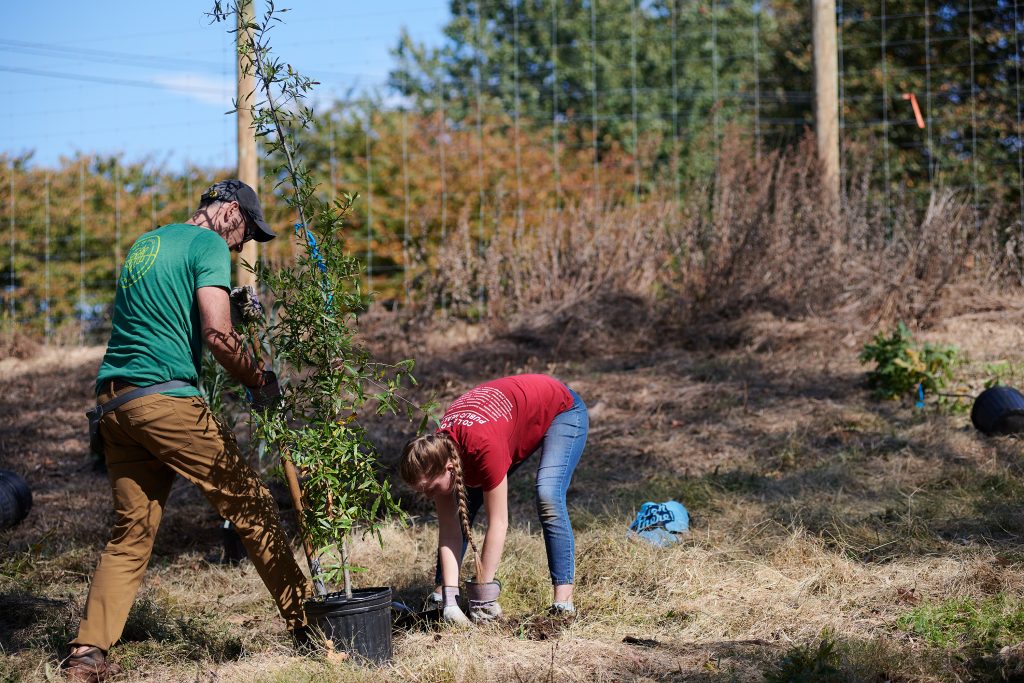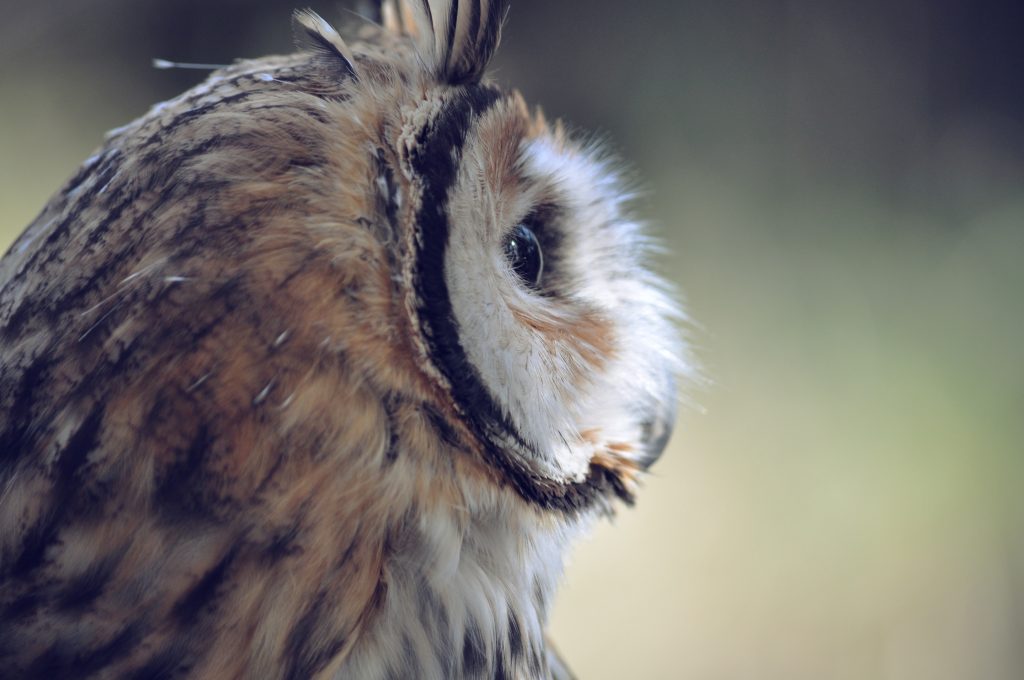Christmas is not complete until I watch Rudolf the Red Nosed Reindeer and hear Burl Ives sing “Holly Jolly Christmas”. But how and when did holly become such a staple of the holidays?
English Holly (Ilex aquifolium) became associated with Christmas because its thorny leaves reminded Christians of the “crown of thorns” referenced in biblical stories. English holly is commonly gown as an ornamental small tree in the United States and its branches are used to make Christmas wreaths. Holly plants only have male or female flowers on a plant, and therefore only female plants produce berries. There are about 480 species of holly in the world, and only some species have thorny leaves.
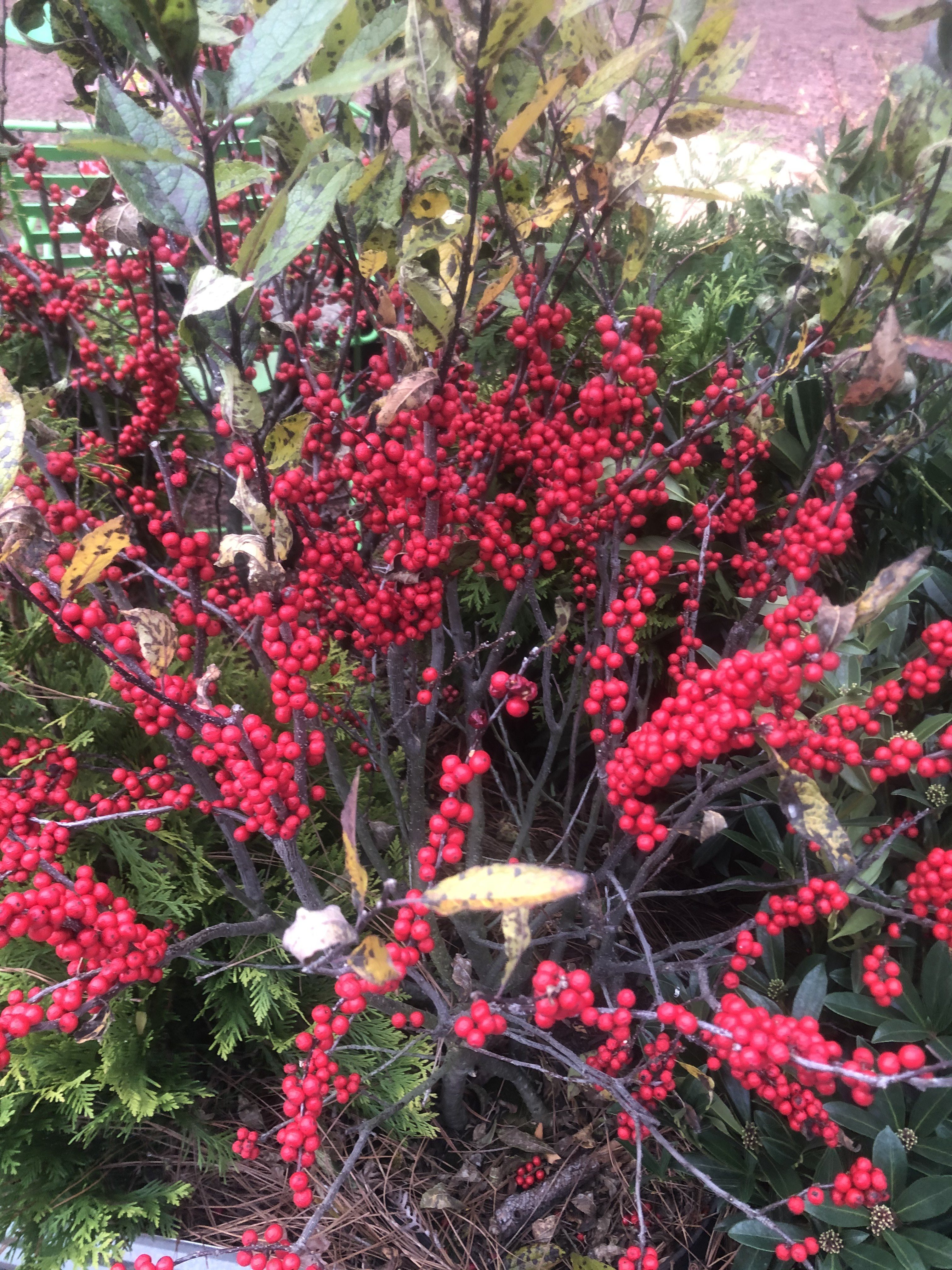
In Philly’s parks, the best place to see hollies would be in the Wissahickon on the Red Trail near the Tree House. There is a variety of native hollies leftover from when this area was a nursery. Elsewhere in Philly’s parks, American and winterberry holly are scarce, but can be found in our forests; these species along with inkberry holly, however, are very commonly planted in ecological restoration sites and as ornamental plants where native species are prioritized.
If you want to see large populations of wild hollies, the best place is in the southern Pine Barrens, where the understory is full of American and inkberry hollies. Millville, New Jersey is even nicknamed “Holly City.”

A holly tree in the Wissahickon by Hermit’s Cave.
The most common native holly in our region is the American holly (Ilex opaca), which looks very similar to English holly, except that the leaves are a lighter green and not nearly as shiny. Like its European relative, American holly is evergreen. This is a more southern species that reaches its northern natural limit in our region. This species also has red berries that are important food for birds like American Robins, Hermit Thrushes, and Cedar Waxwings.
Another species of holly in our area is winterberry holly (Ilex verticillata). This species is a deciduous shrub and its bare branches covered in red berries are also popular as a natural Christmas decoration.
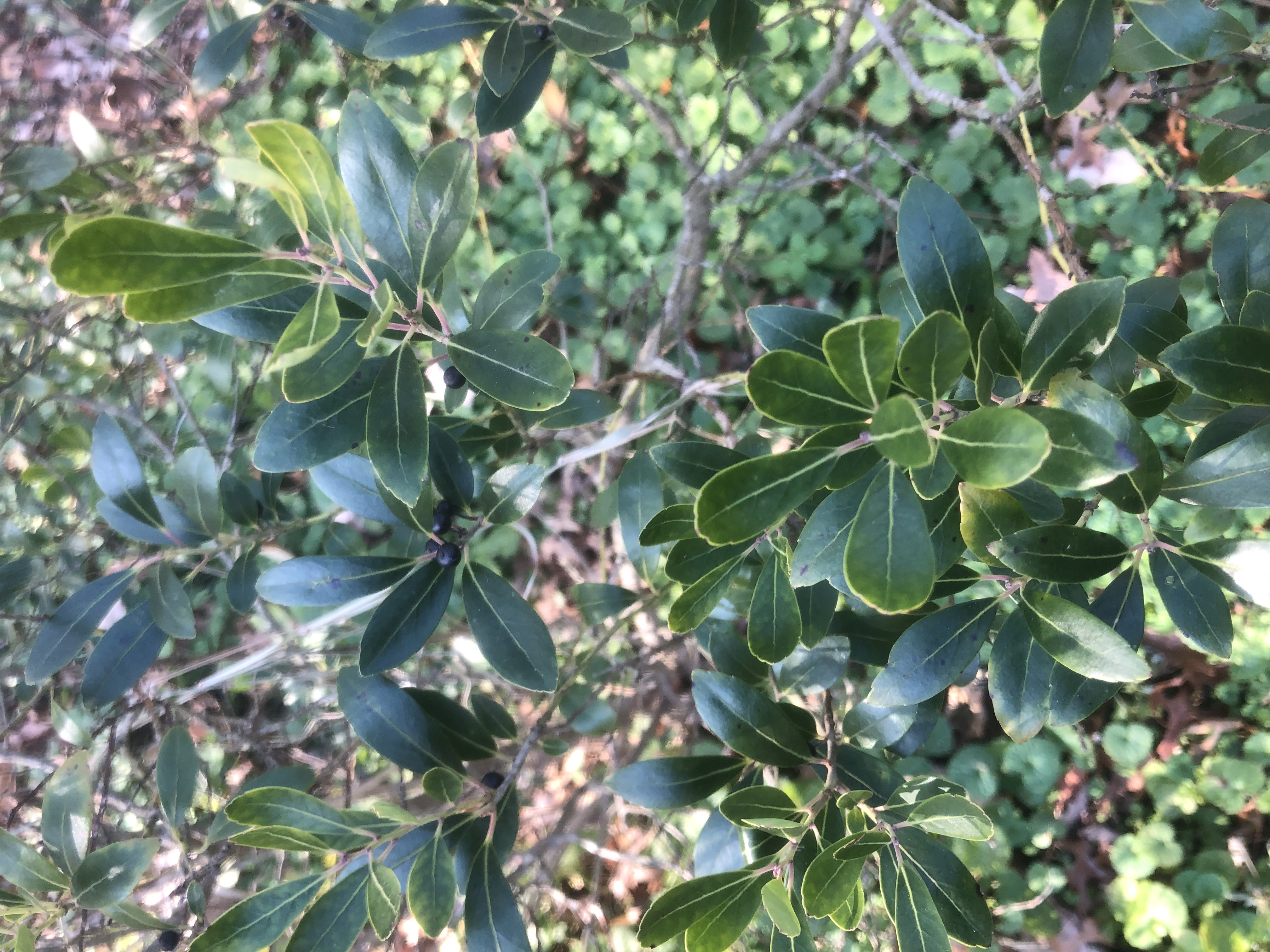
Inkberry holly (Ilex glabra) is a common evergreen shrub in the New Jersey Pine Barnes. Its name is a reference to its dark purple berries. It is an endangered species in Pennsylvania. The habitat preferred by this species in Pennsylvania, sandy coastal plain, is mostly developed by Philadelphia and its suburbs. It is unclear how common this species ever was in the state, perhaps only restricted to sandy banks along the Delaware River. It is a lovely native alternative for boxwood hedges.
Perhaps the most culturally important holly is yerba mate (Ilex paraguariensis). Yeba mate is drunk as a tea and was traditionally cultivated by the Guaraní people indigenous to Paraguay and neighboring countries. Yerba mate is popular today in Paraguay, Uruguay, northern Argentina, and Southern Brazil. In this part of the word, it is very common to see people walking with a thermos of hot water and drinking yerba mate in a gourd with a metal filtering straw. Holly leaves contain caffeine and other cultures have used hollies for tea including in the Southeastern United States and China. I think I may break out my mate gourd and straw to keep warm while looking for thrushes feeding on holly berries in my beloved Wissahickon this weekend.
Philadelphia native Tony Croasdale started birding at about nine years old. He is a graduate student at St Joseph’s University studying invertebrates on native vs. alien shrubs. Tony has performed field research in the Canadian Arctic, Alaska, Brazil, Peru, and in the Mid-Atlantic. He is currently an Environmental Education Program Specialist at Philadelphia Parks & Recreation.
Got a question about birds and other wildlife for Tony? Email info@myphillypark.org to have all of your wildlife questions answered!
